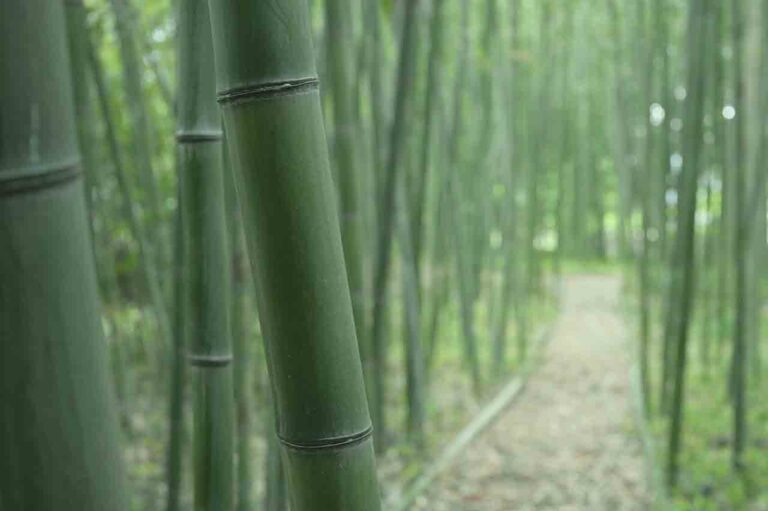
Delicious gourmet spots around [Rokuoin]
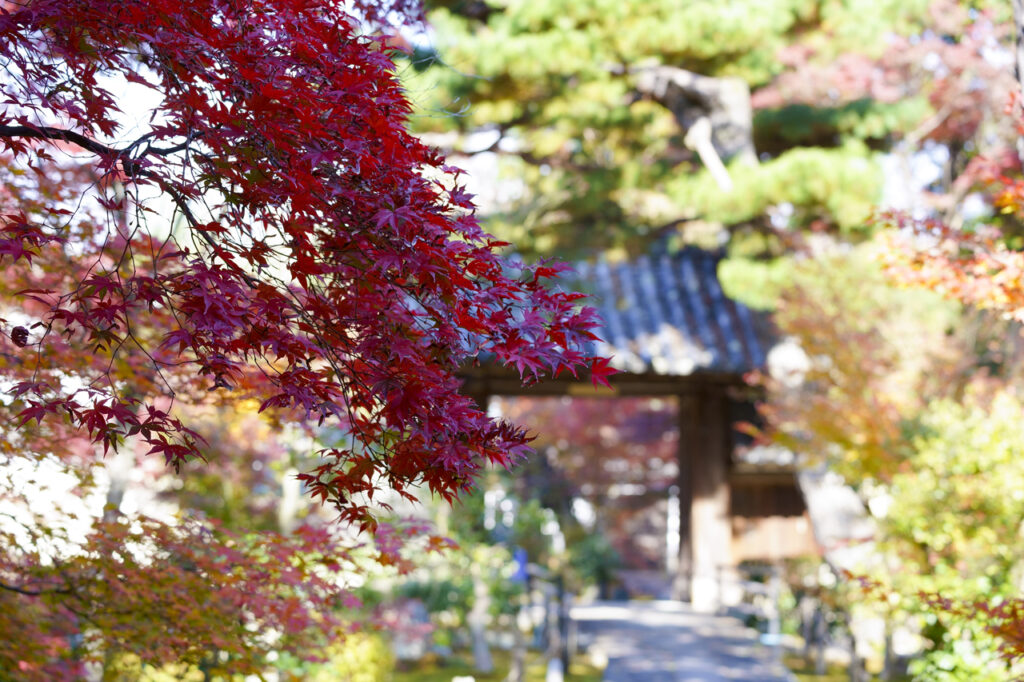

The founding pagoda of Hodoji Temple, which was built by Yoshimitsu Ashikaga in 1379, is the origin of the temple. Hodo-ji Temple was abolished during the Onin War, but Rokuo-in Temple is said to be the only remaining temple. The principal image of Shaka Nyorai and the ten major disciples have been handed down since the time of its foundation. Among them, the ten major disciples with vivid colors are said to have been made by Unkei.
The approach that extends straight after passing through the temple gate is a highlight of the autumn leaves. You can walk through a tunnel of natural beauty, with branches spreading out on both sides of the elegant stone-paved approach to the shrine.
In front of the Kyakuden is a beautiful moss-covered karesansui (dry landscape) garden with a view of the gently sloping ridge of Mt. In mid-June, white flowers of sakura trees bloom. Restoration work on the Shariden Hall, which enshrines the Buddha's tusk statue that Minamoto no Jitsucho brought from the Sung Dynasty, began in January 2020 and will be completed in October 2023, marking its first unveiling in about three years (the hall is open every year on October 15).
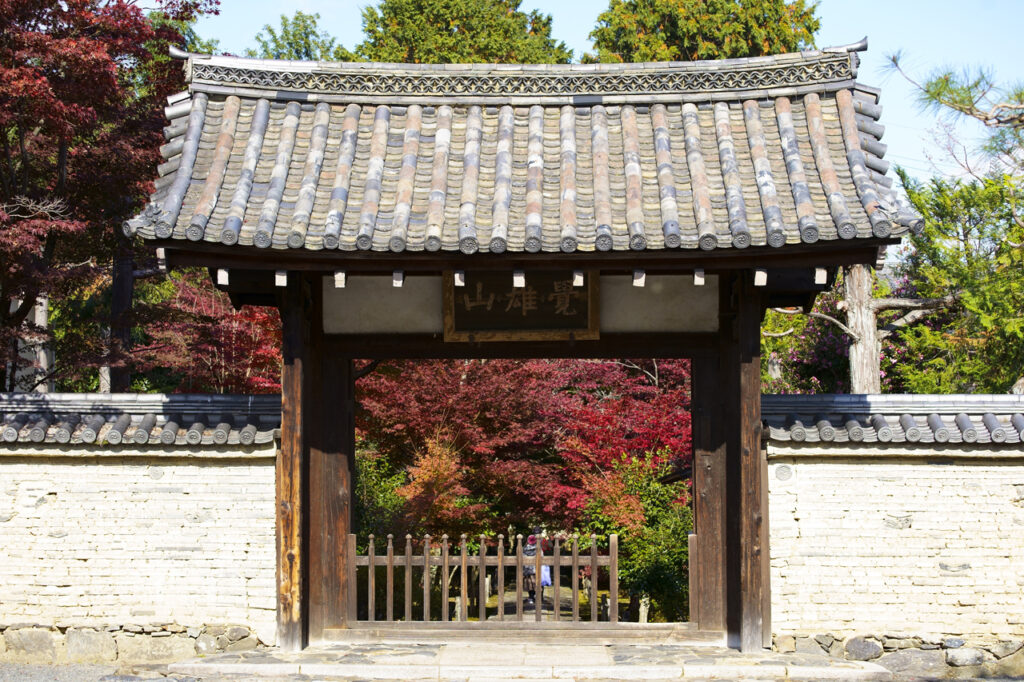

Once you pass through the temple gate, the straight approach to the shrine is a spot where you can enjoy green maple trees in early summer and colored leaves in autumn. You can walk through a tunnel of natural beauty, with branches spreading out on both sides of the elegant stone-paved approach to the shrine.
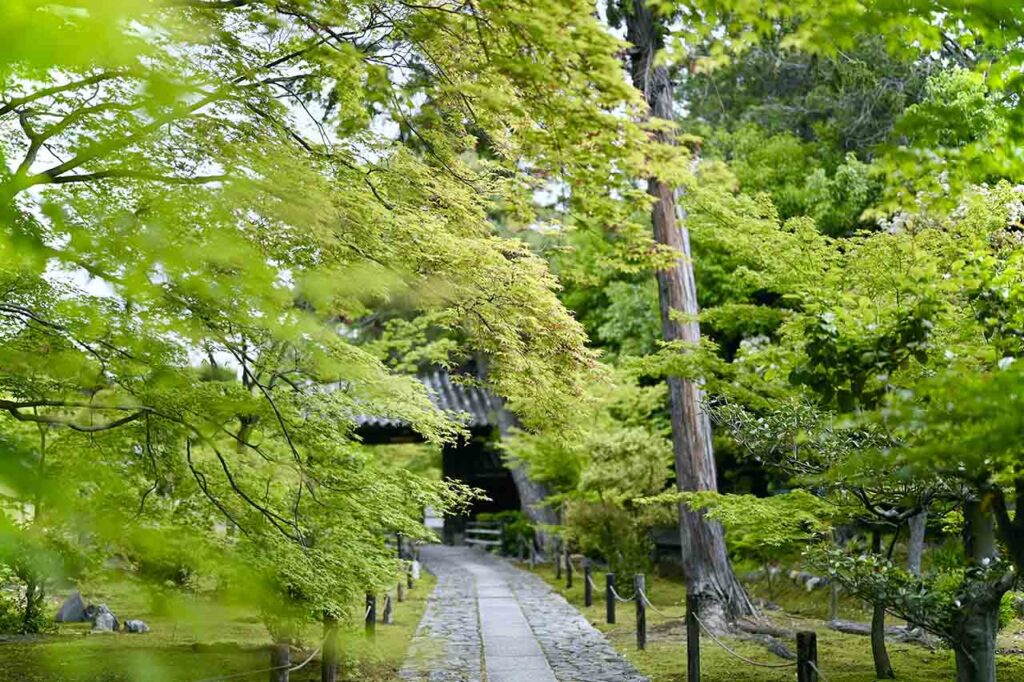
Blue maple in early summer


autumn leaves

In 2021, the native bamboo grove on the west side of the approach will be opened to the public for the first time, and visitors will be able to stroll through it. This year, the path has been renewed with new stones placed on both sides, allowing visitors to stroll through it during the illumination.
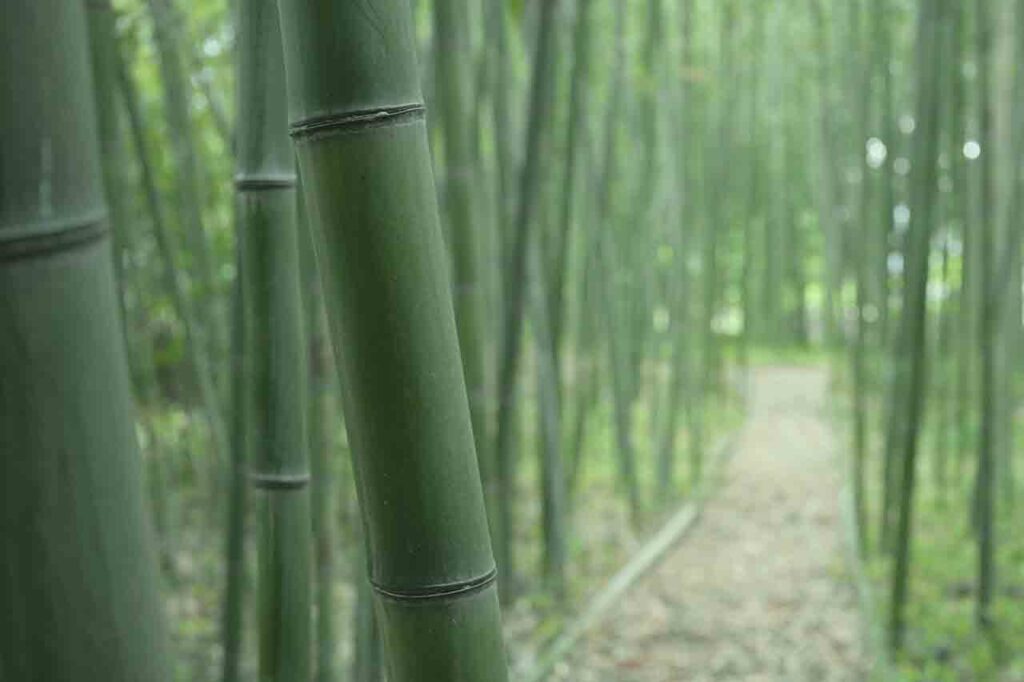

The dry landscape garden with Arashiyama in the background, which can be seen from the reception hall rebuilt in the Meiji period, is a must-see. The interior of the reception hall is decorated with fusuma paintings with the theme of oak leaf veins completed in April 2020, which is also a must-see.
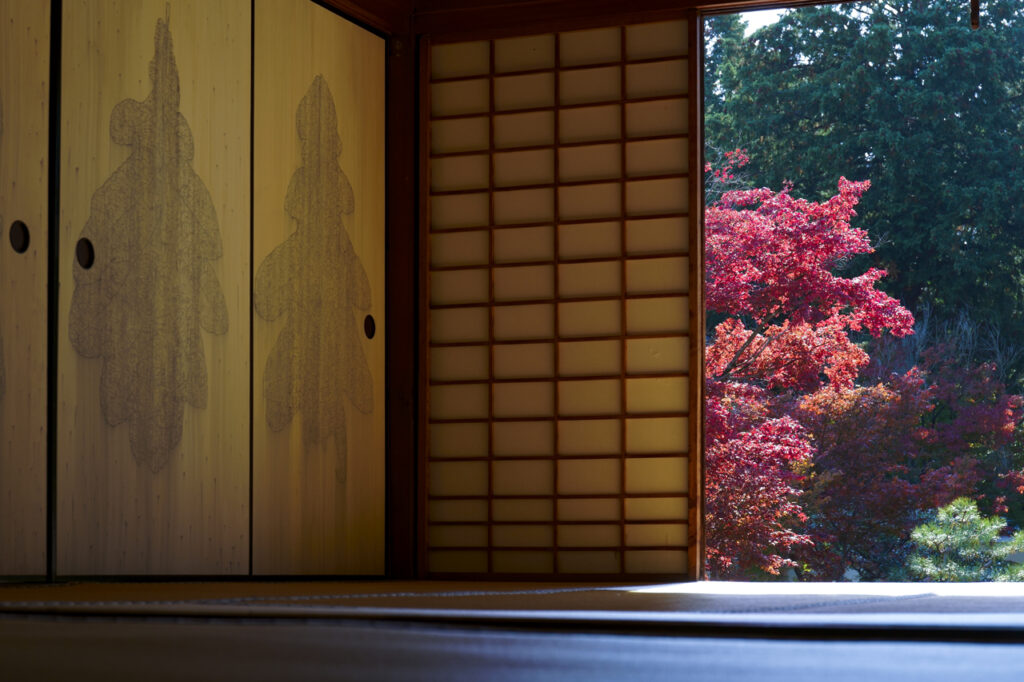
*Photographed with special permission

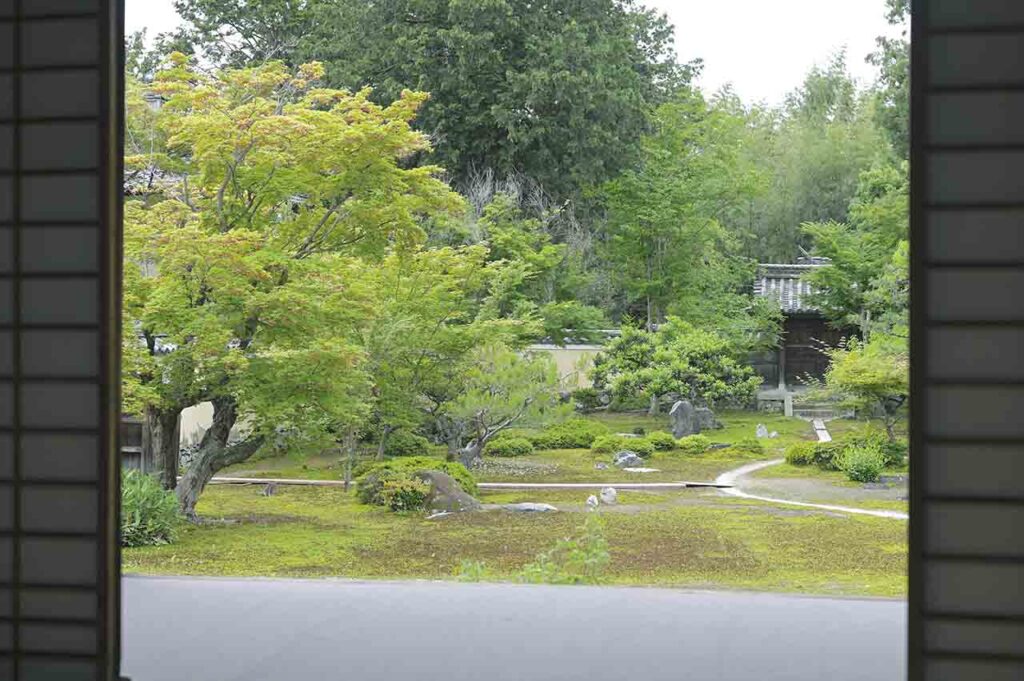

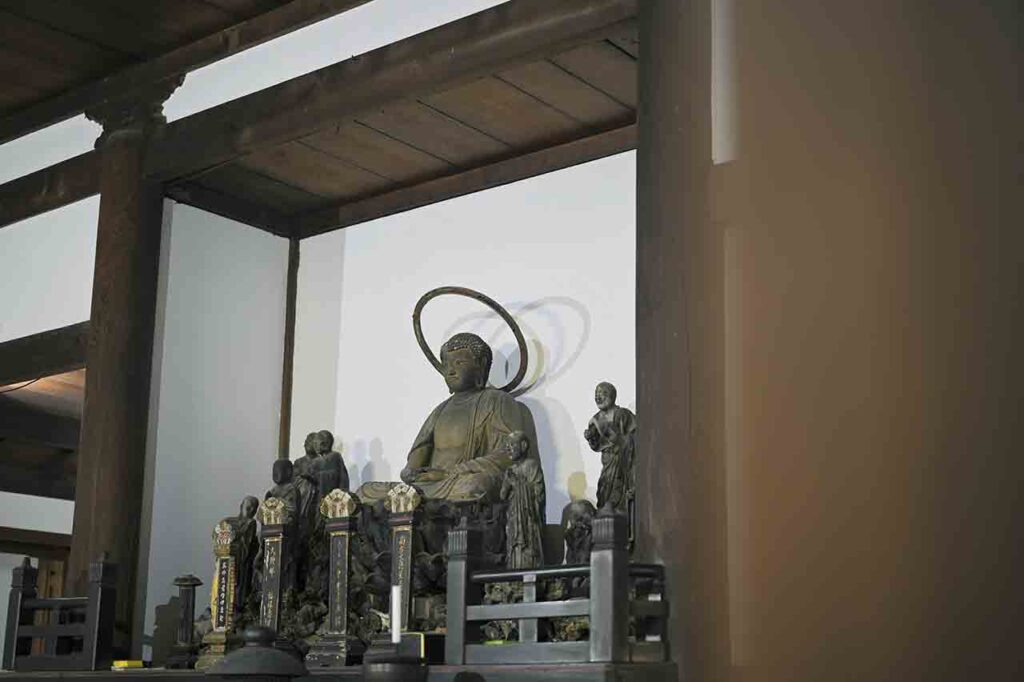
Filmed with special permission

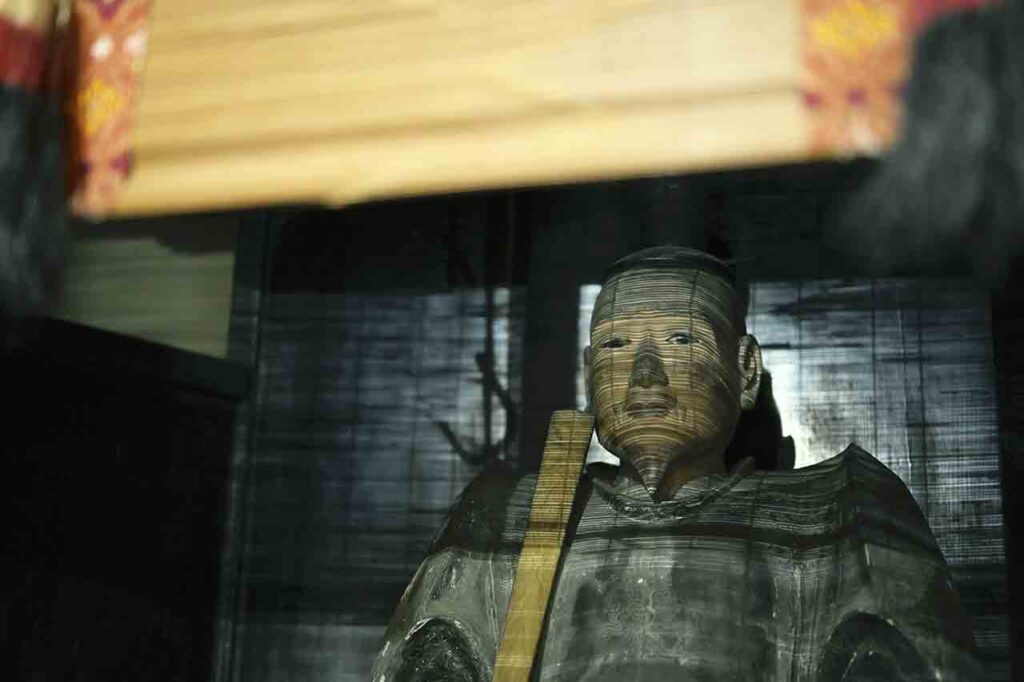
The statue of Ashikaga Yoshimitsu, whose eyes seem to move when you look into them. *Photographed with special permission.

The Shodo, which serves as both the Kaisando and the main hall, is usually open to the public, and visitors can see the statue of Shaka Nyorai, the principal image of Buddha from the Muromachi period, the statue of Ten Great Disciples from the Kamakura period, which is said to have been made by Unkei, and the statue of Yoshimitsu Ashikaga, the founder of the temple. In the hall, there is also an old map of the Saga area from the first half of the 15th century, Oei Junmeizu.
A 100-year-old red pine that shows a beautiful shape in the corner of the garden. It was planted by the previous chief priest, and is called "Guwanmatsu" at the temple. You can also see it from the corridor leading from the reception hall to Shodo.
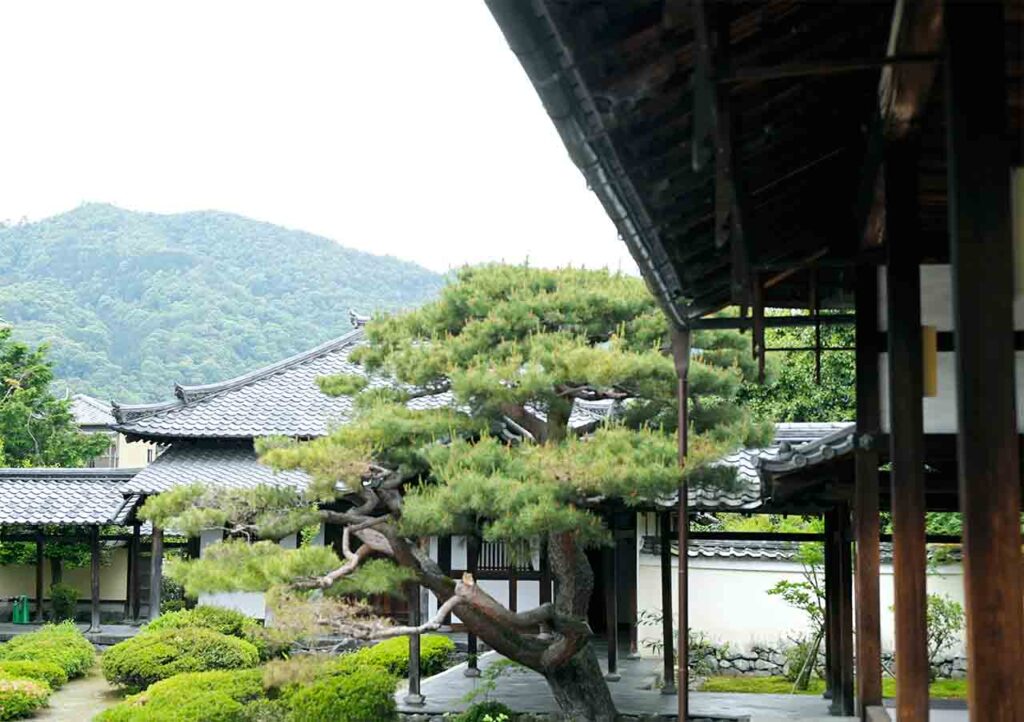

Over 600 interviews per year! An order site carefully selected by the editors who knows Kyoto and Shiga.
nowOfficial LINE friend registration500 yen OFF coupon is being issued!
Distributed every Friday morning at 8:00 am! From new restaurant information to event information that we want to share with you, We deliver articles about Kyoto that are useful to know. About 20,000 people have registered.Click here to add a friend!
 News
News Feature article
Feature article Featured event
Featured event